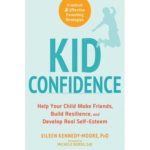You’ve just gotten back from a Learning and the Brain conference, and – frankly – you’re revved up!
You’ve learned so much new information and gained so many new perspectives, you just want to share it all with your colleagues right away.
Of course, it can be challenging to synthesize and organize all that information. Where do you begin? How do you fit all the pieces together? What was the name of that researcher again?
Happily, lots of people have done this synthesis work for you.
In the past, for instance, I’ve recommended this document by Deans for Impact. In a few brisk pages, it summarizes 6 key findings from the world of cognitive science.
Today’s News
I recently stumbled across another synthesis: this one with a twist. It doesn’t just boil lots of information down to easy-to-understand pages. (Although it certainly does do that.) This synthesis provides questions, examples, and activities to help you share the information with other teachers.
For instance: like many other writers (me included), this one focuses on the science of attention. Simply put, students don’t learn about information they’re not attending to.
This Learning Curriculum (2.0) reinforces that crucial point with a video you might show your colleagues.
It describes teaching strategies that – once we understand the importance of attention – will clearly be more and less effective.
It offers specific classroom suggestions and a warning or two. (Videos get students’ attention. But, alas, students might attend to surface features and miss the core concept we want them to understand.)
It also provokes deeper thought with questions you might put to fellow teachers.
Beyond Attention
Of course, this Learning Curriculum goes beyond attention. It considers working memory (my obsession), and prior misconceptions, and retrieval practice, and a host of other important topics.
I don’t agree with everything written here. (Heck, I don’t agree with everything written anywhere.) But, I think this curriculum…
synthesizes and organizes lots of essential information,
offers specific examples with getting bogged down in details, and
creates something usefully new: a strategy for sharing this information with other teachers. (I particularly like the “hinge questions” designed to be sure teachers understand the principles in application.)
For those reasons, I encourage you to check it out. I hope you’ll let me know your thoughts




